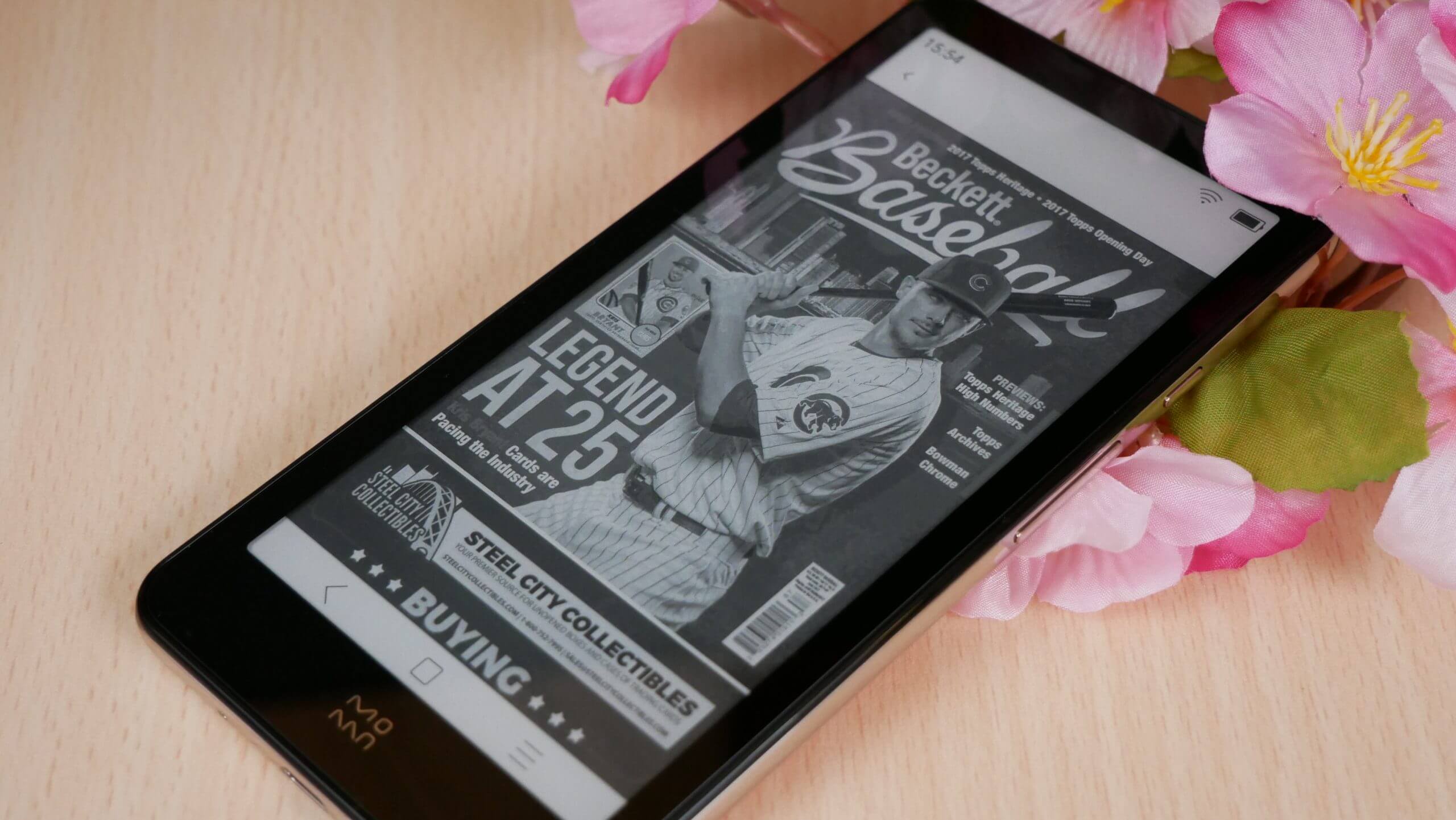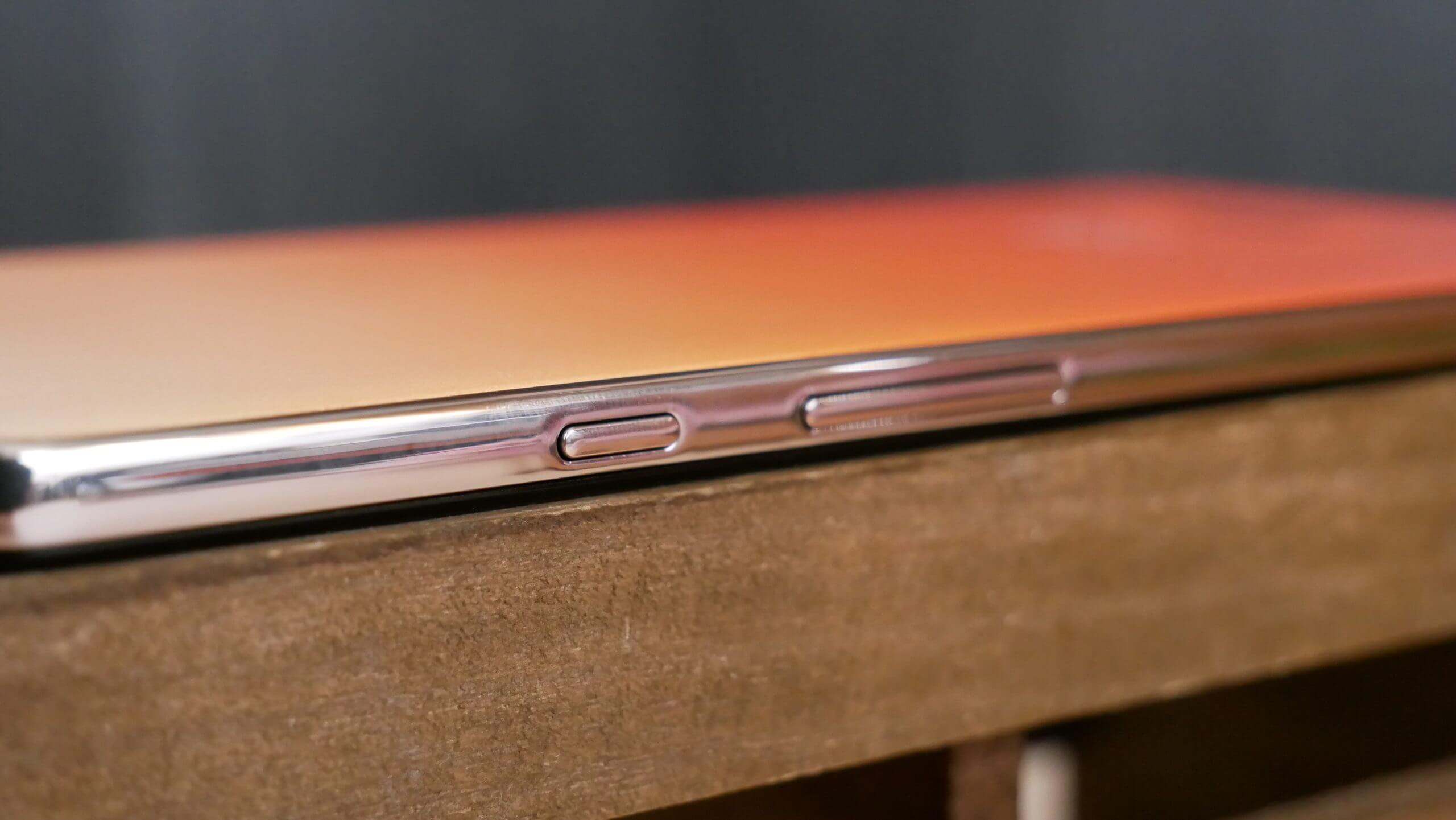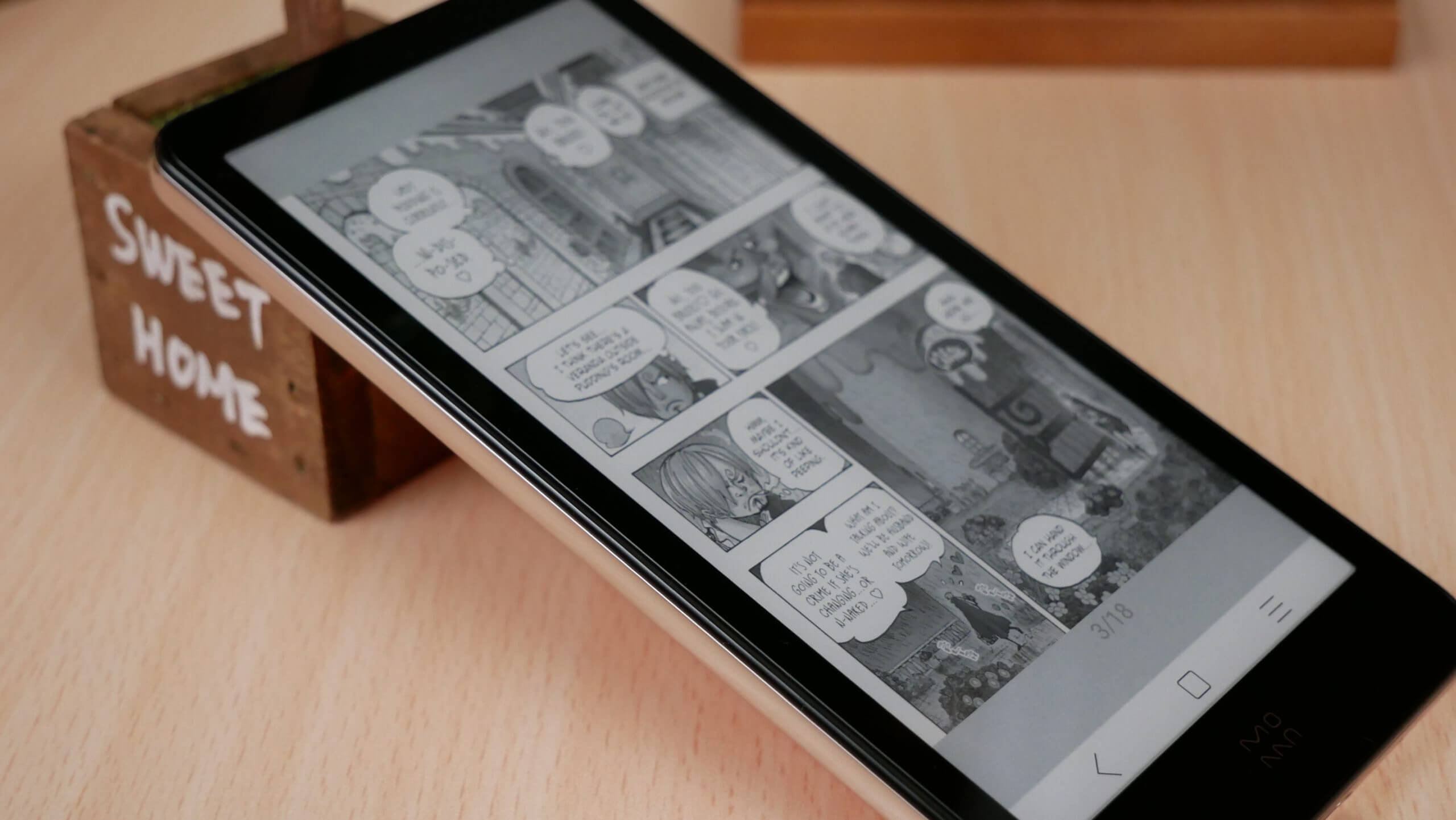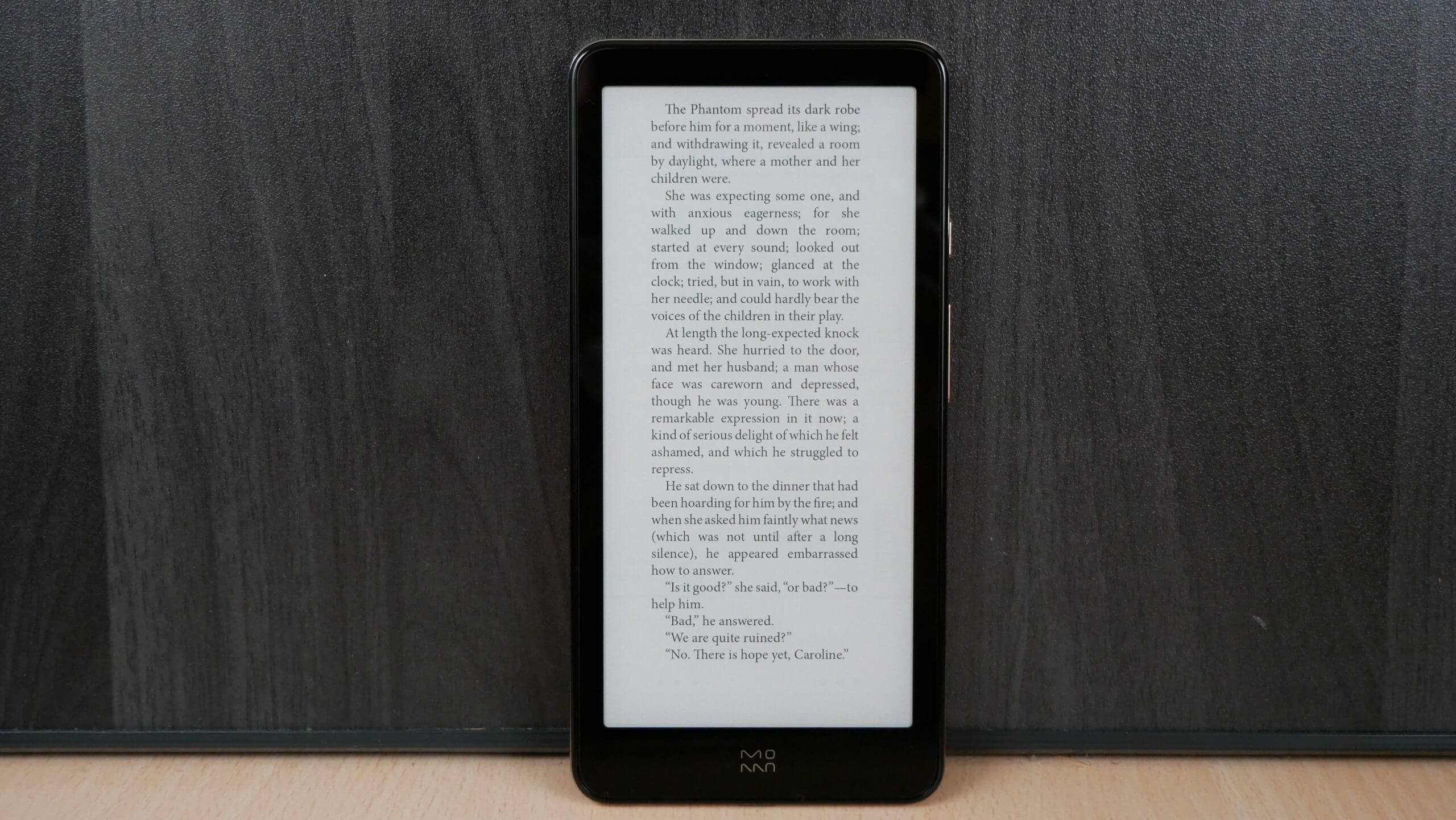The Xiaomi InkPalm Plus is the companies 3rd generation e-reader. This is the first one that has English on it, right out of the box. All of the previous models only had Chinese and had to be rooted with a complicated process just to make it usable in the Western world. What are the big differences between the 2022 model and the one released last year? It has a larger display, with better resolution. The RAM and internal storage has been doubled, which makes the Plus, extremally viable.
Hardware
The InkPalm Plus has a 5.84-inch E INK Carta HD touchscreen display with a resolution of 1440×720 with 212 PPI. The screen is flush with the bezel, protected by a layer of glass. The volume buttons on the side double as page turn buttons when using the stock reading app. You will be able to read in the dark via the front-lit display and color temperature system and they both have 24 levels of brightness.
This new model has a revised design, it is way bigger than the InkPalm mini 2nd generation that came out last year. The back plate is this nice sunset orange and has some gradients. The sides have this nice gunmetal silver aluminum finish. The front is black, which helps extenuate the grey e-paper screen. There are volume buttons on the side of the screen, a power button on the top and a USB-C port on the bottom.
Underneath the hood is a Rockchip RK3566 processor, which is based on the Allwinner B300 quad-core Cortex-A7 SoC. It has 2GB of RAM and 64GB of internal storage, which should provide enough juice to run any Android 11 app that you can throw at it. There isn’t any great app stores that are pre-loaded on it, but you can easily sideload in alternative app markets such as Amazon, Samsung Galaxy Store or even the Good e-Reader App Store. There are no speakers or a 3.5mm headphone jack, so the only way you will be able to listen to audiobooks, podcasts or music is via wireless headphones or earbuds. The Plus has Bluetooth 5.0, which is compatible with every wireless accessory you can think of. This device looks like a phone and performs like one, but there is no carrier capabilities, instead it simply has WIFI, so you can easily surf the net or access cloud storage. You can charge the device with the USB-C cable and also sideload in your own books. It supports EPUB, TXT and PDF. Xiaomi promises up to 30 days of battery life from its 2,200mAh battery. The battery is charged to 100% within 2.5 hours using a 5V charger. It weighs a paltry 0.14kg.
The hardware is solid for a dedicated e-reader that is pocket friendly. It fits in your jeans pocket or back pocket. It is easily accessible to read all of your favorite news sources or just fire up an ebook while you are waiting. Will this be a Kindle or Kobo alternative? It depends on where you are reading. A larger screen makes more sense if you do most of your reading at home. If you are commuting or always out and about, at the beach or waiting for an appointment, the InkPalm Plus makes more sense, since the footprint is smaller and it does have the advantage of being able to install your own apps, which you can’t do on the Kindle or Kobo.
Software
Xiaomi is on their 3rd generation of the InkPalm series and this is the first one that is entirely in English, which makes it useful for anyone who wants to use it as a portable e-reader. It is running Google Android 11, which is great for being able to sideload in your favorite apps. There are a few preinstalled Chinese apps, since this reader is primarily marketed in China. So you will have JD, Kindle China, KOREADER, a very small Chinese only app store with 12 apps, which sucks. If you speak English, you are in luck, because you can simply uninstall of the pre-loaded apps. Just long press and it will provide a pop-up asking you if you want to remove the app. I would just do that with everything on the home screen and then load in your own. I suggest using APK MIRROR if you simply want to install a couple of your favorite apps that you use all of the time, but I think it makes the most sense to use a dedicated app market, because they keep the apps up to date, so you don’t need to always be hunting for the latest version. Sadly, Google Play is not an option on this device.
There isn’t much of a user interface to speak of. It really doesn’t look like Xiaomi is using a heavily customized launcher. You basically just have your home screen which comprises of the apps you have and the more you have, it adds extra pages. There no dedicated shortcuts to your library, apps or files, everything is literary just app related.
If you pull down the top of the screen downwards, you will get a series of functions that are critical to making this device work properly. You can turn on or off the front-lit display, control the brightness, adjust the color temperature system, and there is a slider bar that lets you control global contrast, such as making the black text appear darker and the whites brighter. There is a Bluetooth audio control slider for volume, but you you should be using the hardware buttons on the side of the unit. You can also adjust the global contrast to black blacks look more black, which helps with font readability. There are also dedicated buttons for doing a full page refresh, clearing the cache from all open apps, being able to take a screenshot or even battery saving options. Speed modes? Previous generation models had it, but this one doesn’t. The closest it has is called ghost reduction which increases the full page refreshes when you navigate around various menus.
What about reading? Normally we have entire sections devoted to the reading experience. However, there really isn’t any preinstalled app that is not in Chinese. So you will have to rely on installing your own apps and Android users tend to have their favorites. For example, the vast majority of people who have owned E INK devices in the past, tend to do business with one company or a few and their digital content is spread around a few different ecosystems. With this device you can easily install all of the ones you love. Like borrowing books from Overdrive via Libby or have a Scribd subscription? Your mileage may vary on this reader, simply because any app that is using an animated page turn engine and has no way of shutting it off in the app settings menu, will likely not perform very well. Suffice to say, the 300 PPI screen will ensure most of the text and fonts will look razer sharp.
Wrap up
The InkPalm Plus is very user friendly. There is little to no learning curve when using this as a dedicated e-reader. There are no complicated elements that bog the average user down and confuse them. It basically looks like an Android smartphone and even functions like one, but it is not a phone. It is just basic reader that costs $200, so you are cutting what you pay for. There are better alternatives on the market, with tons of advanced settings, speed modes and customization options, but they cost double the price. I think the best one on the market right now is the Hisense Hi Reader, in terms of value.
(adsbygoogle = window.adsbygoogle || []).push({});
The post Hands on review of the Xiaomi InkPalm Plus ebook reader first appeared on Good e-Reader.






